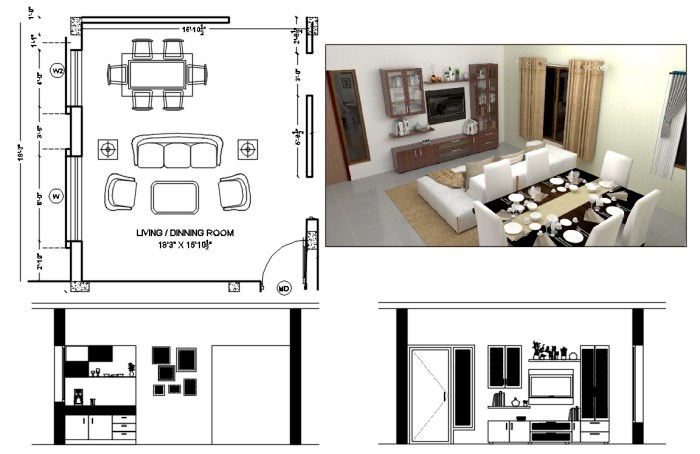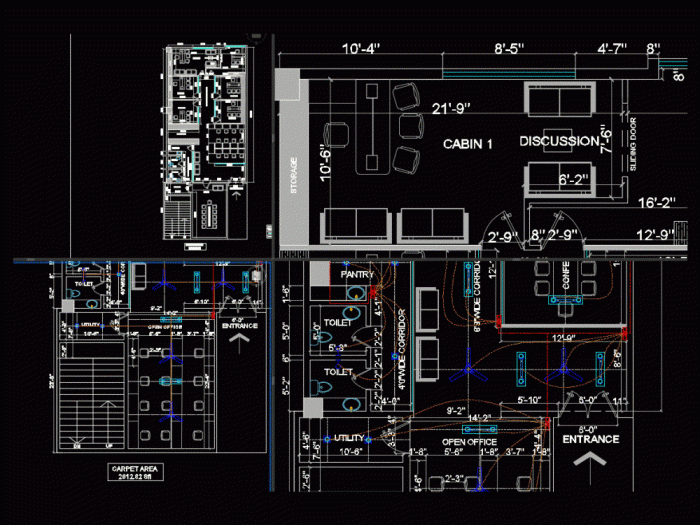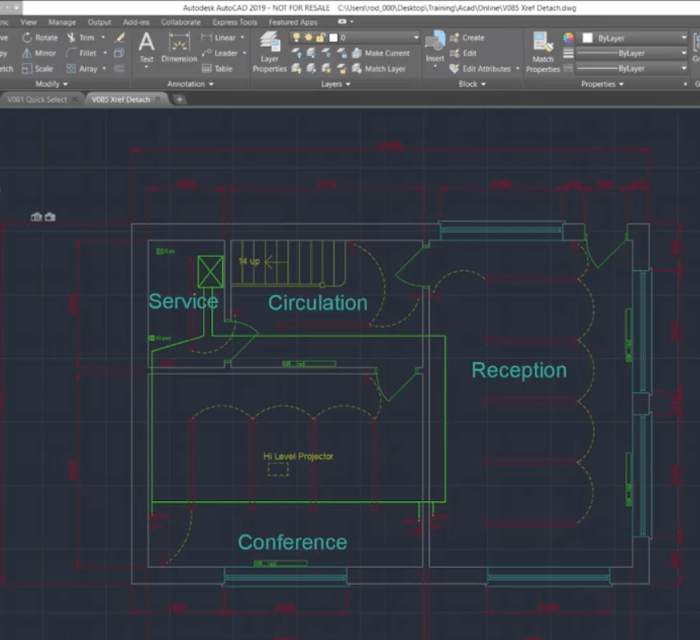Exploring AutoCAD Interior Design: Enhancing Spaces with Precision

Embark on a journey through the world of AutoCAD interior design, where precision meets creativity to transform spaces. Dive into the realm of tools and techniques that elevate interior design projects to new heights.
Introduction to AutoCAD Interior Design
AutoCAD plays a crucial role in interior design by providing designers with powerful tools to create accurate and detailed floor plans, 3D models, and construction documents.
The importance of AutoCAD software for interior designers lies in its ability to streamline the design process, increase efficiency, and improve collaboration with other professionals involved in the project.
Enhancing the Design Process with AutoCAD
- AutoCAD allows interior designers to create precise floor plans and layouts, ensuring that every element fits perfectly within the space.
- With AutoCAD's 3D modeling capabilities, designers can visualize their ideas in a realistic way, helping clients better understand the final design concept.
- AutoCAD enables designers to make quick changes to the design, test different options, and iterate on their ideas easily, resulting in a more refined and polished final product.
- Collaboration is made seamless with AutoCAD, as designers can share their files with architects, engineers, and contractors, ensuring everyone is on the same page throughout the project.
Key Features of AutoCAD for Interior Design

AutoCAD offers a range of tools specifically designed to streamline the interior design process, making it easier to create accurate floor plans and customize designs according to project requirements.
Tools Tailored for Interior Design
- AutoCAD Architecture: This specialized version of AutoCAD includes features such as walls, doors, windows, and other architectural elements commonly used in interior design.
- 3D Modeling: AutoCAD allows designers to create detailed 3D models of interior spaces, providing a realistic visualization of the final design.
- Material Library: AutoCAD offers a comprehensive library of materials, textures, and finishes that can be applied to design elements, helping designers to convey the look and feel of the space.
Creating Accurate Floor Plans
AutoCAD assists interior designers in creating precise floor plans by providing tools for measuring distances, angles, and dimensions. Designers can easily draw walls, doors, windows, and other architectural elements to scale, ensuring that the layout accurately reflects the spatial requirements of the project.
Customization Options
- Parametric Design: AutoCAD allows designers to create parametric designs, where elements are defined by parameters that can be easily adjusted to explore different design options.
- Blocks and Symbols: Designers can create custom blocks and symbols in AutoCAD to represent furniture, fixtures, and other design elements, facilitating the placement and arrangement of these items in the design.
- Annotation and Markup: AutoCAD enables designers to add annotations, dimensions, and other markup to their designs, providing clarity and information for clients and collaborators.
Creating 2D Designs with AutoCAD

Creating 2D interior design layouts using AutoCAD involves a structured process that allows for precise and detailed drawings. By effectively utilizing AutoCAD tools, interior designers can develop intricate 2D designs that serve as the foundation for their projects.
Tips for Utilizing AutoCAD Tools
- Utilize layers effectively to organize different elements of the design and control visibility.
- Take advantage of the snap and grid settings to ensure accurate alignment and measurements.
- Use the dimensioning tools to add precise measurements to your drawings.
- Leverage the array command for repetitive elements like furniture or fixtures.
- Experiment with different line weights and linetypes to enhance the visual hierarchy of your design.
Workflow for Developing Detailed 2D Designs
When creating detailed 2D designs for interiors in AutoCAD, it is essential to follow a structured workflow to ensure accuracy and efficiency.
- Start by sketching out the basic layout of the space, including walls, doors, and windows.
- Use the drawing tools in AutoCAD to create accurate representations of the floor plan, elevations, and sections.
- Add furniture, fixtures, and other elements to the design, paying attention to scale and placement.
- Apply materials and textures to different elements to visualize the design more realistically.
- Review and revise the design as needed, making adjustments to ensure everything aligns with the client's requirements.
Utilizing 3D Modeling in AutoCAD for Interior Design
D modeling in AutoCAD offers numerous benefits for interior design projects. It allows designers to create realistic and detailed visualizations of interior spaces, helping clients better understand the proposed designs. Additionally, 3D modeling enables designers to analyze spatial relationships, lighting effects, and material finishes more effectively, resulting in more accurate and precise designs.
Creating Realistic 3D Visualizations
- Utilize AutoCAD's 3D tools to extrude, revolve, and loft 2D shapes into 3D objects.
- Apply materials and textures to surfaces to mimic real-world finishes like wood, metal, and fabric.
- Use lighting effects to enhance the realism of the 3D model, such as spotlights, ambient lighting, and shadows.
- Experiment with camera angles and perspectives to showcase different views of the interior space.
Integrating 3D Models into the Design Workflow
- Import 3D models from other software programs or libraries into AutoCAD for further refinement and detailing.
- Use 3D models as a basis for creating 2D construction drawings, ensuring accuracy and consistency throughout the design process.
- Collaborate with clients and stakeholders by presenting 3D visualizations for feedback and approval before finalizing the design.
- Explore virtual reality (VR) or augmented reality (AR) applications to immerse clients in the 3D model and provide a more interactive design experience.
Collaborative Design Workflow with AutoCAD

AutoCAD plays a crucial role in facilitating collaboration among interior designers, architects, and clients by providing a platform for sharing and working on design files together in real-time.
Sharing AutoCAD Files and Designs with Team Members
One of the key strategies for sharing AutoCAD files and designs with team members is through cloud-based platforms like Autodesk A360, allowing multiple users to access and edit the same design simultaneously.
Importance of Collaborative Design Approach
A collaborative design approach in interior design projects is essential as it ensures that all stakeholders are involved in the decision-making process, leading to a more cohesive and well-rounded final design that meets the needs and preferences of all parties involved.
Closure
In conclusion, AutoCAD revolutionizes interior design by streamlining collaboration, enhancing visualization, and ensuring accuracy in every detail. Step into the future of design with AutoCAD at your fingertips.
FAQ Resource
How does AutoCAD benefit interior designers?
AutoCAD streamlines the design process, enhances accuracy, and offers customization options tailored for interior design projects.
Can AutoCAD be used for both 2D and 3D interior design?
Yes, AutoCAD offers tools for creating both 2D layouts and realistic 3D visualizations of interior spaces.
How does AutoCAD facilitate collaboration in design projects?
AutoCAD enables seamless sharing of files and designs among designers, architects, and clients, fostering a collaborative design approach.

